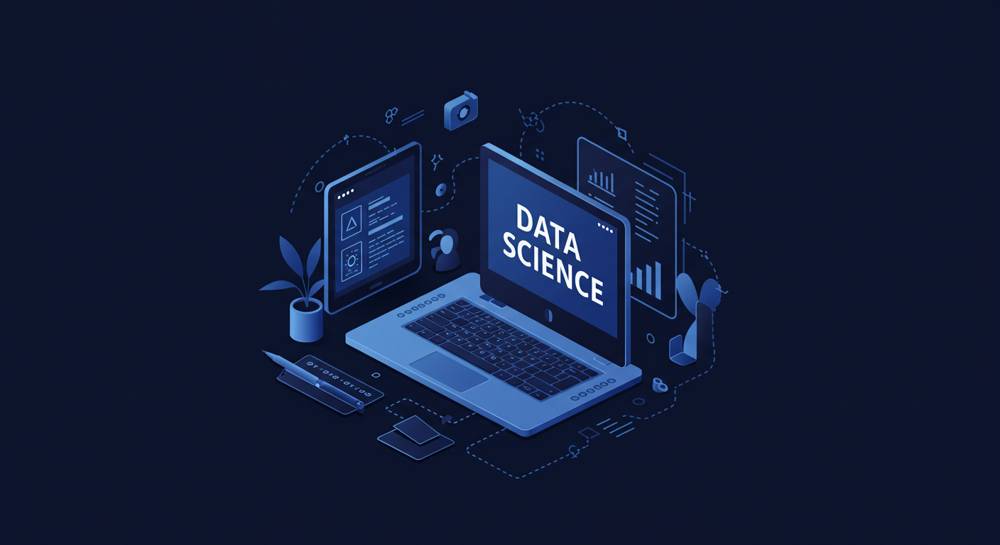If you’ve been curious about diving into the world of data science, this tutorial is here to provide you with a structured approach to get started. You can get training directly from this article, which will guide you through the fundamentals, tools, and techniques of data science. Whether you are an intermediate programmer or a professional developer, this article will help you navigate the exciting field of data science with practical insights and examples. By the end of this tutorial, you’ll have a solid grasp of the key concepts and methods required to excel in this domain.
What is Data Science?
Data science is the interdisciplinary field that combines programming, statistics, and domain expertise to analyze and interpret complex datasets. The main goal of data science is to extract actionable insights from structured and unstructured data. This field has become increasingly important due to the exponential growth of data generated by businesses, social media, IoT devices, and more.
At its core, data science can be viewed as a pipeline that involves:
- Collecting raw data.
- Cleaning and preprocessing it to remove inconsistencies.
- Analyzing it to uncover trends and patterns.
- Building predictive models using machine learning (ML) techniques.
- Communicating findings through visualizations or reports.
For instance, consider a retail company that uses data science to predict customer purchasing behavior. By analyzing transaction data, the company can tailor personalized recommendations and optimize inventory management.
Tools and Technologies in Data Science
To succeed as a data scientist, you need to master a range of tools and technologies that facilitate data processing, analysis, and visualization. Here are some of the most widely used ones:
Programming Languages: Python and R are the most popular languages for data science due to their extensive libraries (e.g., Pandas, NumPy, and Scikit-learn for Python). Example:
import pandas as pd
data = pd.read_csv("example.csv")
print(data.head())Big Data Platforms: Tools like Apache Spark and Hadoop handle large-scale data processing.
Databases: Proficiency in querying databases using SQL is essential. NoSQL databases like MongoDB are also valuable for unstructured data.
Visualization Tools: Libraries like Matplotlib, Seaborn, and Plotly are indispensable for creating insightful charts and dashboards.
Integrated Development Environments (IDEs): Jupyter Notebooks, VS Code, and RStudio streamline the coding process by providing interactive environments.
Using these tools effectively lays a strong foundation for tackling real-world data problems.
Data Collection and Preprocessing
Before diving into analysis, you need to acquire and clean your data. Data collection involves gathering datasets from diverse sources, such as APIs, web scraping, or databases. However, raw data is often messy and requires preprocessing to ensure it is suitable for analysis.
Key Steps in Data Preprocessing:
Handle Missing Values: Missing data can skew results. You can either impute missing values or drop incomplete rows, depending on the context.
Example:
# Filling missing values with the column mean
data['column_name'].fillna(data['column_name'].mean(), inplace=True)Remove Duplicates: Duplicate entries can distort analysis.
Normalize Data: Scaling numerical features ensures that no single variable dominates the analysis (e.g., using MinMaxScaler in Scikit-learn).
Encode Categorical Variables: Convert non-numeric data (e.g., “Yes” or “No”) into numeric representations for machine learning models.
Proper preprocessing ensures that the data is clean, consistent, and ready for further exploration.
Exploratory Data Analysis
Exploratory Data Analysis (EDA) is all about understanding your data’s structure, trends, and anomalies. It involves statistical and graphical techniques to gain insights.
Common EDA Techniques:
- Summary Statistics: Use descriptive statistics like mean, median, and standard deviation to summarize data.
- Correlation Analysis: Identify relationships between variables using correlation matrices.
- Visualization: Create scatter plots, histograms, and heatmaps to uncover patterns.
Example:
import seaborn as sns
sns.heatmap(data.corr(), annot=True)EDA is an iterative process where you continually refine your hypotheses and uncover deeper insights. For instance, a company analyzing customer demographics might discover that age and income are highly correlated with purchasing behavior.
Machine Learning Basics for Data Science
Machine learning is a subset of artificial intelligence that involves creating algorithms capable of learning patterns from data. In data science, ML models are used to make predictions or classify data.
Types of Machine Learning:
- Supervised Learning: Uses labeled data to train models. Example: Predicting house prices based on features like size, location, etc. Common algorithms include Linear Regression, Decision Trees, and Random Forests.
- Unsupervised Learning: Works with unlabeled data to find hidden patterns (e.g., clustering customers into groups).
- Reinforcement Learning: Models learn through trial-and-error in dynamic environments.
Example of a simple supervised learning implementation:
from sklearn.linear_model import LinearRegression
model = LinearRegression()
model.fit(X_train, y_train)
predictions = model.predict(X_test)Understanding ML algorithms and their use cases is critical for building predictive models in data science.
Data Visualization Techniques
Data visualization is the art of presenting data in a way that is easy to interpret. Effective visualizations can reveal trends, outliers, and patterns that might not be obvious in raw data.
Common Visualization Methods:
- Line Charts and Bar Graphs: Ideal for showing trends over time or categorical comparisons.
- Scatter Plots: Great for displaying relationships between two numerical variables.
- Box Plots: Useful for summarizing the distribution and identifying outliers.
- Geospatial Visualizations: Tools like Folium can be used to map data with geographical dimensions.
Example:
import matplotlib.pyplot as plt
plt.plot(data['date'], data['sales'])
plt.title("Sales Over Time")
plt.show()By mastering visualization tools, you can effectively communicate your findings to stakeholders.
Summary
This tutorial covered the essential components of data science, from understanding its definition to diving into tools, preprocessing, EDA, machine learning, and visualization techniques. Data science is a powerful field that enables professionals to make data-driven decisions, solve complex problems, and uncover valuable insights.
To excel in data science, practice is key. Work on real-world datasets, experiment with different tools, and continually refine your skills. Remember, the journey to becoming a proficient data scientist is iterative and rewarding. Keep learning, and soon, you’ll be well-equipped to tackle even the most challenging data problems.
For further reading, consider exploring official documentation for libraries like Pandas, Scikit-learn, and Matplotlib.
Last Update: 25 Jan, 2025

